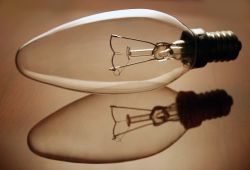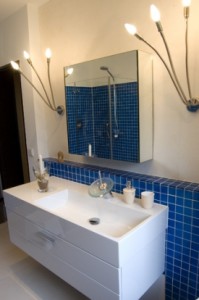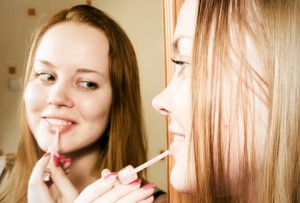Bathroom Vanity Lighting: Choose and Position Lights and Light Fixtures
Bathroom vanity lighting is a challenge for anyone trying to create attractive, comfortable and useful lighting. Fortunately, it is all a matter of finding the right position and brightness.
Bathroom vanity lighting is certainly the trickiest aspect of bathroom lighting design, and it may very well be the trickiest aspect of any home lighting design. Nonetheless, when it is treated as a simple checklist, bathroom vanity lighting is not only easy, but also a great deal of fun.
Setting the Right Light Levels
The right light level for vanity lights is actually fairly bright, and one common mistake is to have vanity that is too dim. Bright lights are needed for shaving and applying makeup, both of which are exceptionally intricate tasks, and require some of the brightest task lighting in the home.
In order to provide this level of lighting, you’ll want to have at least two sources of light, providing a total of 3000 lumens. Translated into wattage, you’ll want to have two 100 watt incandescent bulbs, two 75 watt halogen bulbs or two 40 watt fluorescent tubes.
Note that this can cause some difficulty in itself. By having bright task lighting in a small space, the light from the vanity can easily overwhelm the bathroom or cause it to be overlit. Light sources from other areas in the bathroom will be needed to offset this effect.
Choosing the Right Color Bulbs
For shaving, the color of light doesn’t matter very much, but for makeup, getting just the right color of bulb is absolutely essential. If your bulbs shine the wrong color of light, you will make mistakes in blending and choosing colors and even in noticing flaws.

Incandescent bulbs provide warm light, good for applying evening makeup, but poor for daytime makeup.
For this reason, you should actually have two different sources of bathroom vanity lighting, depending on what makeup you are putting on. For daytime makeup, you’ll want light that is whiter. Daytime makeup is seen under white sunlight and often relatively white fluorescent lights at work. For evening makeup, you’ll want light that is redder. Evening makeup is seen under dimmer, reddish incandescent lighting.
Of course, you don’t want to actually put two completely different sets of lighting behind your mirrors, so what is best? If your bathroom has a window, then the problem is likely solved for you, as you’ll have white-bluish sunlight from the sun available in the mornings when you need it. Just choose a light source with a warmer color (between 2500-3000° Kelvin, about the brightness of an incandescent bulb), and use the light source alone for evening makeup and add the sunlight for daytime makeup. If you are putting on evening makeup during the day, then you should draw your blinds, so that you see what your makeup will look like under indoor lighting.
If you don’t have a window, you can use an illuminated makeup mirror to correct for the color of your lights. So, if your light is warm, get a mirror that shines cool light and vice versa. Such mirrors can be easily installed on the side of your vanity, so that they can be swivelled to where you need them, or they can even be portable and simply kept in the drawer until needed. When you need to put on the type of makeup that doesn’t match your vanity lights, use this mirror to change the color and to give you a better sense of what your makeup will look like.Bathroom Vanity Lighting Placement
Placing bathroom vanity lighting is important, and it is an area where mistakes can be easily made. First, placing the lights in the wrong place can create harsh shadows. Second, placing the lights in the wrong place can create unpleasant glare. I will discuss how best to avoid this problem when placing your lights.
Shadows
The most common place to put bathroom vanity lighting is directly above the mirror, which is a mistake. When this happens, the entire bottom half of the face is poorly lit (which can even be dangerous when shaving). Further, deep shadows of the features are created all over the face, leading to the appearance of sunken eye and also unnaturally accentuating wrinkles.

This photograph shows one option for avoiding glare, placing the lights beside the mirror above eye level.
In addition, you can use the mirrors to create even more sources of light. If your lights are sufficiently far enough away from the wall and close enough to the mirror, not only the lights themselves but also their reflections will light the face, effectively creating four lights, each of which is lighting the face from a different angle.
In addition, a ceiling light behind the sink will cause an additional source of light, bouncing off of the mirror and providing even more light (note that this may affect the color of the light, so be careful).
Glare
With bathroom vanity lighting, you want to light your eyes, but not get light in your eyes. This, of course, is rather tricky. One of the biggest mistakes that people (including lighting designers) make in creating vanity lights is the creation of harsh glare. I will discuss two strategies for avoiding glare, each of which has trade-offs.
Glare occurs when someone has the beam of light from a bulb shine directly into the lens of his or her eye. Note that this means that glare can happen even when someone doesn’t look directly into a bulb. There is “peripheral glare”, and peripheral glare can be just as uncomfortable and damaging as direct glare.One of the biggest mistakes in vanity design is to put open light bulbs directly on the side of the mirror, especially if those lights are at eye level. When lights are directly on the side of the mirror, the light from the bulbs goes straight into the eyeball of the people doing their makeup and shaving. This is uncomfortable, even when not looking at the lights.
There are two options: either use diffuse lights or don’t put the lights at eye level.
Diffusion can be caused by using heavily frosted glass that diffuses the light of a bulb enough that it does not hurt even to look straight at the bulb. There are many bathroom fixtures available that are heavily frosted for just this reason. Light also may be spread over a larger area. Fluorescent tubes shine their light all the way up and down the tube so that no one point is as bright as staring at a light bulb. Similarly, using many dim bulbs spreads the glare over a larger area. Nonetheless, neither of these alternatives is ideal, as dimmer glare is still glare and is only less uncomfortable, not comfortable. There is still light getting in the eyes, just not as much of it.
Another option is to place the lights so that they are not quite at eye level. A light doesn’t need to be very far above eye level to prevent glare, just twenty degrees or so. When this is done, the lights will not shine directly into the eyes of the person using the vanity. However, the tradeoff is that the task light will not be quite as good. The bottom of the face will avoid the worst shadows, but will not be quite as well lit.
Putting It All Together
Bathroom vanity lighting is tricky, but can be very straightforward once you’ve gotten the basics down.
- Use about 3000 lumens of light.
- Be sure to have access to both warm and cool light for daytime and evening makeup.
- Use at least two lights, either diffuse or above eye level.
It’s all a matter of making sure that the light is in the right place and that it is sufficiently bright for your needs.
Back from Bathroom Vanity Lighting to Bathroom Lighting Design

